College Football’s Inevitable Conclusion? Two 20-Team Megaconferences

It’s coming. You can see football Darwinism at work, and so can we. College athletics is relentlessly consolidating its power and profits in the hands of the few. It is inexorably transforming from a sprawling association of regionally based conferences into a tighter consortium of the super-rich and super-powerful, in concert with their network overlords. Charming, we know.
Where will it end? Right here, says Sports Illustrated. We brought this exercise in greed to its logical conclusion: a 40-school alliance, split into two 20-team megaconferences that are fully weaponized versions of the Big Ten and SEC and are aligned with the highest broadcast bidders. (Fittingly, no single person is in charge—there will be a pair of competing commissioners.)
If the creation of a football-only league is inevitable—to apply a label you’ve heard a thousand times before—we’re leaning all the way into the concept. What follows is a not-so-modest proposal to create the Professional Amateur Non-Employee Football league, or PANE-FL for short.
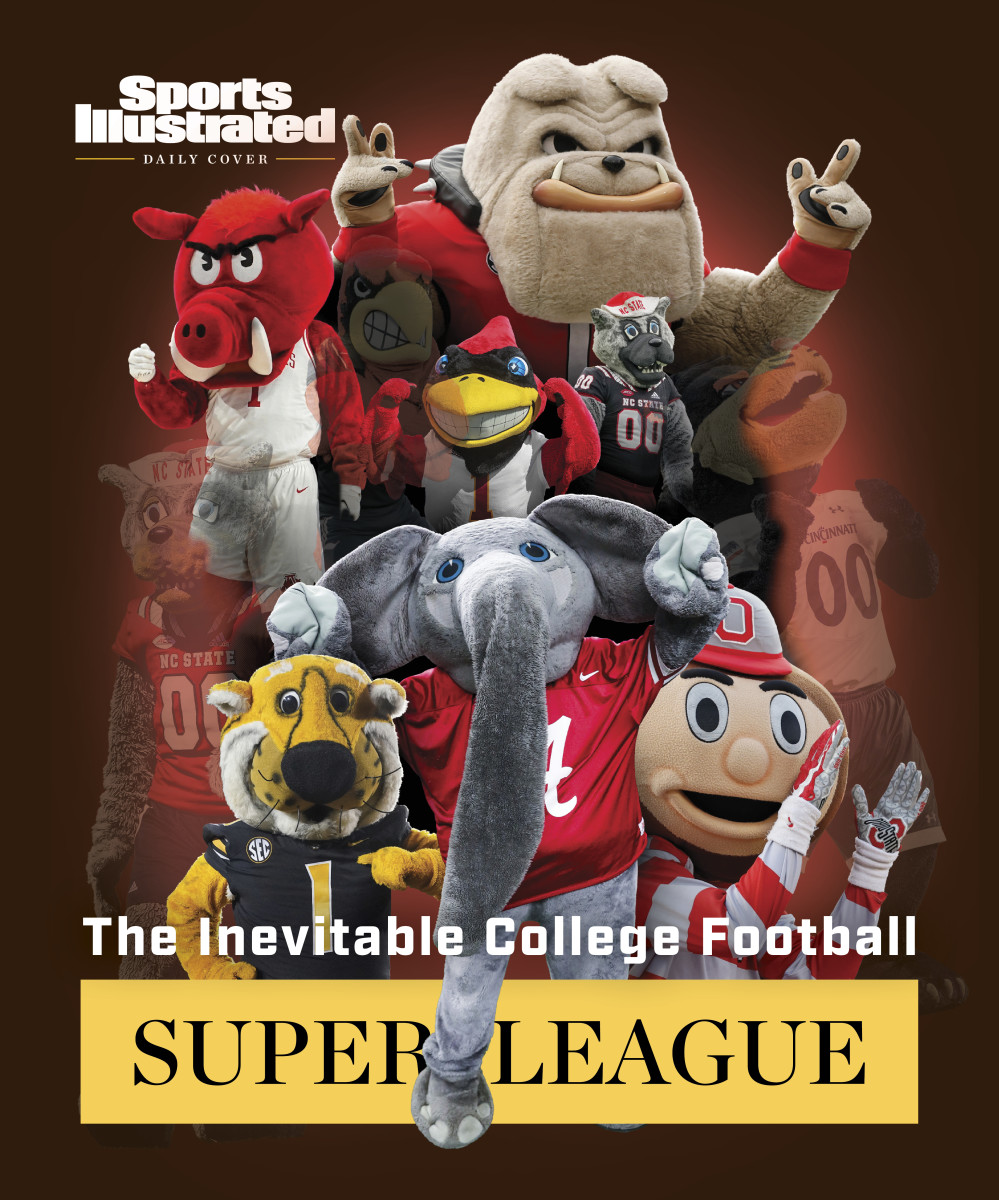
To create our league, we followed the mentality of the current industry leaders and eliminated all other sports, ignored concerns about season length, scoffed at travel demands, yawned at academic emphasis, flouted tradition, terminated rivalries and insulted fan sentiment. We wanted to create something like what this ultimate Death Star might actually look like. Let the revenue flow like Dr Pepper and NIL beer.
The primary guiding principle here is chasing dollars, of course, but we did use a range of factors in deciding membership in the PANE-FL: attendance, TV viewership, on-field success over the past decade, national championships won since 1970 (when full integration of the sport began to take hold), willingness to spend on football and future trajectory. A few rivalries survived, but not out of reverence or respect for popular opinion. They were just easy local couplings, since our divisional alignment within the two conferences adheres to geography. (Wild concept in this day and age, sure, but at least one thing about this exercise still has to make sense.)
Do the math and you know what a 40-team alliance means: A lot of the schools currently in power conferences are being powered down and kicked out. Thirty of them, in fact. There is one elevation from the Group of 5 hoi polloi (blue turf plays well on TV), and a certain stubborn independent has been conscripted into a conference—and without a voice in shaping the playoff. Mostly, it’s time to hoist some dead weight overboard. The power conferences are rife with members who have contributed little while riding the coattails of powerhouses they lucked into allegiance with a long time ago.
Today is conference cutdown day. Bring your playbooks to the commissioner’s offices.
Your elite conference membership dating to the 19th century has expired, Illinois and Purdue. Your 90-year stay as a stowaway in The Club is over, Vanderbilt. Sorry for your luck, Tobacco Road tagalongs Duke, Wake Forest and North Carolina State. Shut up and dribble, Kansas. Beat it, Boston College. Scram, Stanford.
We arrived at our 40-team limit via simple math: We ranked our top 50, then averaged them and threw out those that didn’t make the cut. What happens to those cast aside? In the true spirit of college athletics, we don’t care. Fend for yourselves while we’re over here counting our money.
The losers (and near-losers)
- Last four in (to borrow a basketball bracketology favorite): Mississippi, North Carolina, Kentucky, Arkansas. Don’t get the big head over your inclusion; it was borderline for all of you.
- First four out: Louisville, North Carolina State, Iowa State, Cincinnati. The Bearcats own the sad distinction of being the only CFP qualifier to be kicked out of the PANE-FL.
- The easiest evictions: Duke, Vanderbilt, Wake Forest, Kansas, Rutgers, Washington State. Maybe if you band together you can get a contract to show your games on gas station TVs.
The 30 Power 5 schools evicted (using 2023 membership):
SEC: Missouri, Vanderbilt
Big Ten: Minnesota, Purdue, Maryland, Indiana, Illinois, Northwestern, Rutgers
Big 12: Iowa State, Cincinnati, Houston, Texas Tech, Kansas
ACC: Louisville, North Carolina State, Pittsburgh, Georgia Tech, Wake Forest, Duke, Boston College, Syracuse, Virginia
Pac-12: Arizona State, Colorado, Stanford, Arizona, California, Oregon State, Washington State
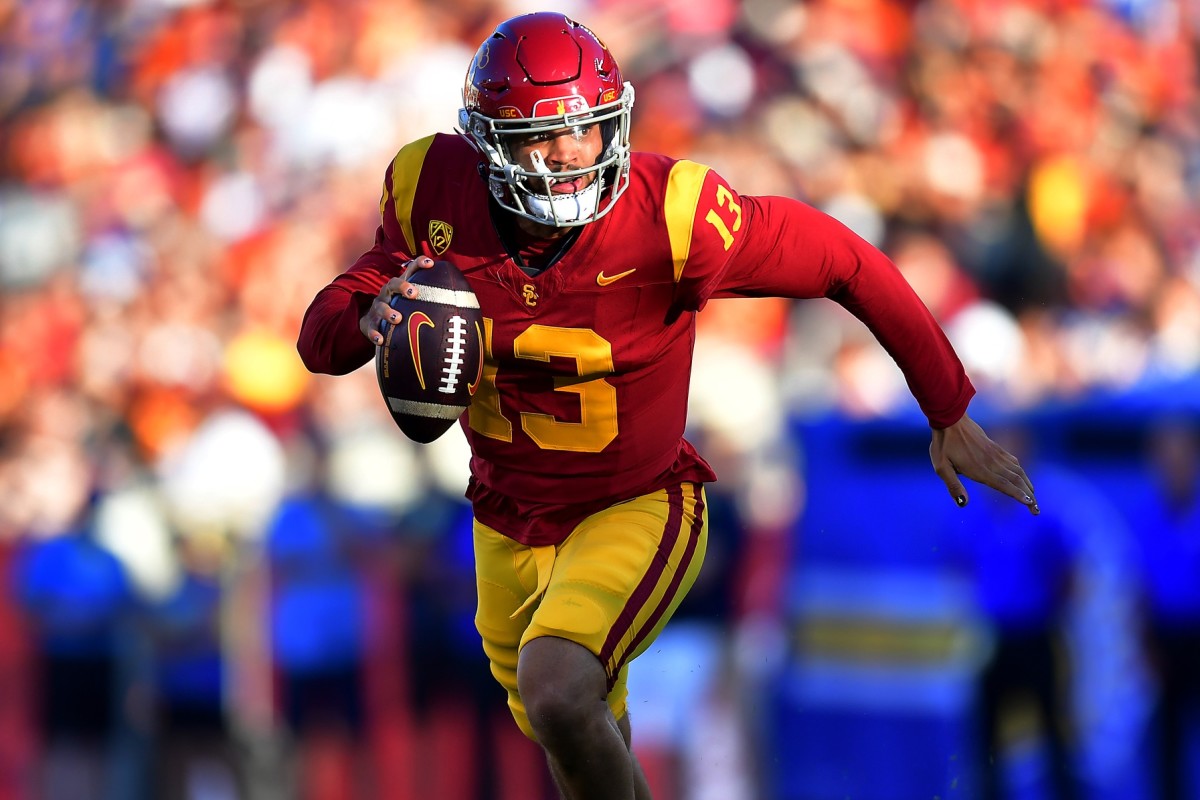
Big Noon Conference
Commissioner: Eric Shanks
Deputy commissioner: Tony Petitti
West Coast Division
USC (No. 10 selection)
Oregon (16)
Washington (26)
UCLA (32)
Average team rank: 21
The LA schools thought they could run and hide, but in the end, their destiny was to join forces with the Pacific Northwest stalwarts (mostly for purposes of travel ease). The best news: You’ll be able to watch all these games on linear television.
Mountain/Plains Division
Utah (20)
Kansas State (25)
BYU (29)
Boise State (31)
Average team rank: 26.2
Welcome to the big-time, Boise. Your invitation to the party was mostly a necessity: The league needs inventory in our 10 p.m. ET slot. We’ve got a little with the West Coast Division, and we’ve got a lot with this one. An overlapping doubleheader starting at midnight ET is also workable with this setup.
Midwest Division
Notre Dame (8)
Wisconsin (14)
Iowa (17)
Nebraska (23)
Average team rank: 15.5
Offense is optional in the Midwest Division (pending results from a comparatively less ground-and-pound Wisconsin team), but good ratings won’t be. Notre Dame and Nebraska have the championship pedigree even though it’s been a while, and what a helmet matchup it will be to see those two get together each year. Iowa’s delightful children’s hospital wave tradition helps for spectacle reasons if the football stays poor to watch.
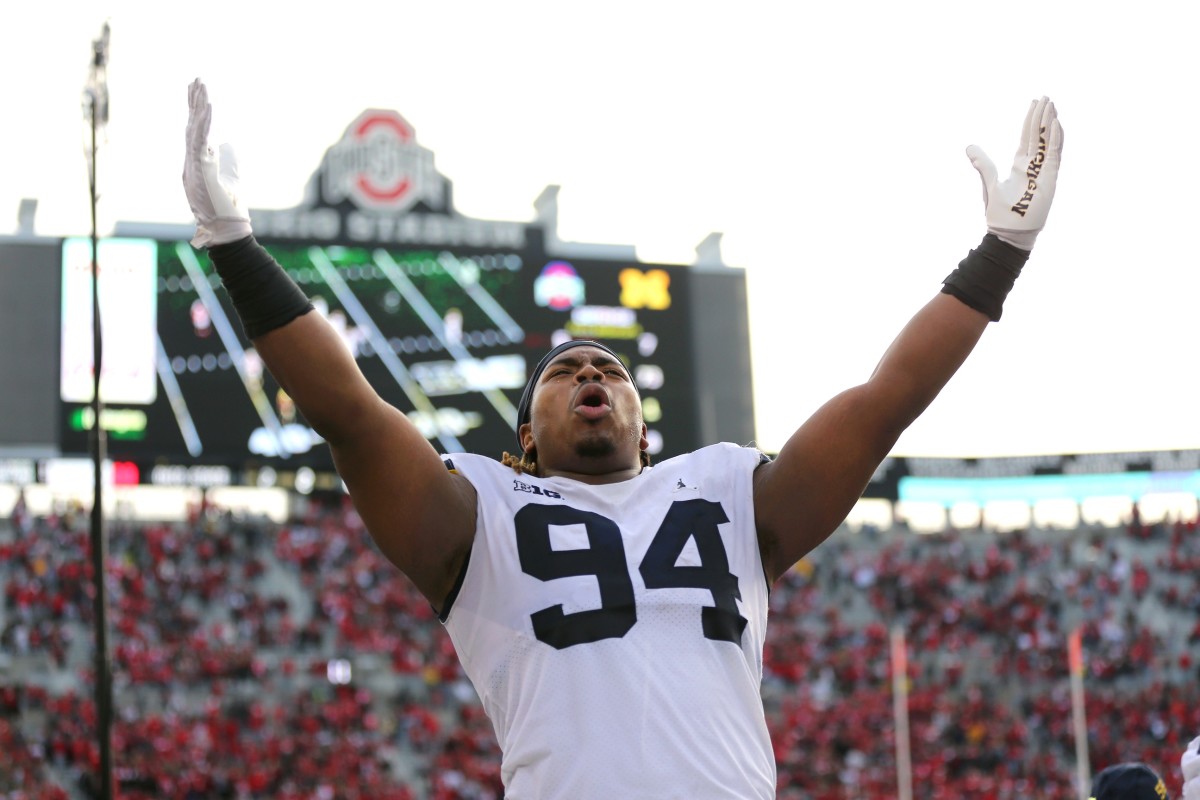
Mideast Division
Ohio State (3)
Michigan (5)
Michigan State (22)
Kentucky (39)
Average team rank: 17.2
This wouldn’t be too bad of a men’s basketball setup, but I guess we’ll never know about that. It’s not a perfect fit regionally, but Kentucky can bring its fair share of spite to a division that is a midwestern epicenter of hatred for the league and provides an anchor yearly matchup with Ohio State and Michigan. (The weather in Kentucky is close enough to Midwestern, anyway.)
Atlantic Division
Penn State (9)
Virginia Tech (30)
West Virginia (32)
North Carolina (38)
Average team rank: 27.2
The whiteout game (which, at the league’s behest, will now be the scene for every home game, not just once annually), “Country Roads” at the end of every quarter, Virginia Tech’s “Enter Sandman” entry and the cachet of the Jordan Brand give each school a unique calling card in the Atlantic Division. Enjoy your new permanent home and away helmets, Heels.
UNC's practice helmet will feature the Jump Man logo, as well. Here's Larry Fedora holding said practice helmet ... pic.twitter.com/FhNftKC8tr
— Andrew Carter (@_andrewcarter) August 5, 2017
Worldwide Leader Conference
Commissioner: Burke Magnus
Deputy commissioner: Greg Sankey
Lone Star Division
Texas (15)
Texas A&M (18)
TCU (24)
Baylor (34)
Average team rank: 22.8
The PANE-FL will have a revenue championship as well. It isn’t the main competition, but it will exist sidesaddle to on-field competitive excellence. Next to the Mideast Division, the Horns and the Aggies will duel to claim who can spend the most on facilities and buyouts and everything else to make sure the budget balances to continue a somewhat plausible claim there isn’t enough left to pay the players. For all their monetary clout, they’re in a division with two teams that have won conference championships, which should give them a kick on the field.
Southwest Division
LSU (4)
Oklahoma (7)
Oklahoma State (21)
Arkansas (40)
Average team rank: 18
Oklahoma AD Joe Castiglione once called the fact that the Hogs and Sooners have not played a home and home in modern times “one of the mysteries of the universe.” Well, that mystery is solved. For the first time since 1926, the Hogs and Sooners will get it on. They’ll do so at Arkansas’s new home: Cowboys Stadium in Dallas, because there’s nothing like playing college football in a monument to sports capitalism right next to a monument for real capitalism (the Walmart across the street).
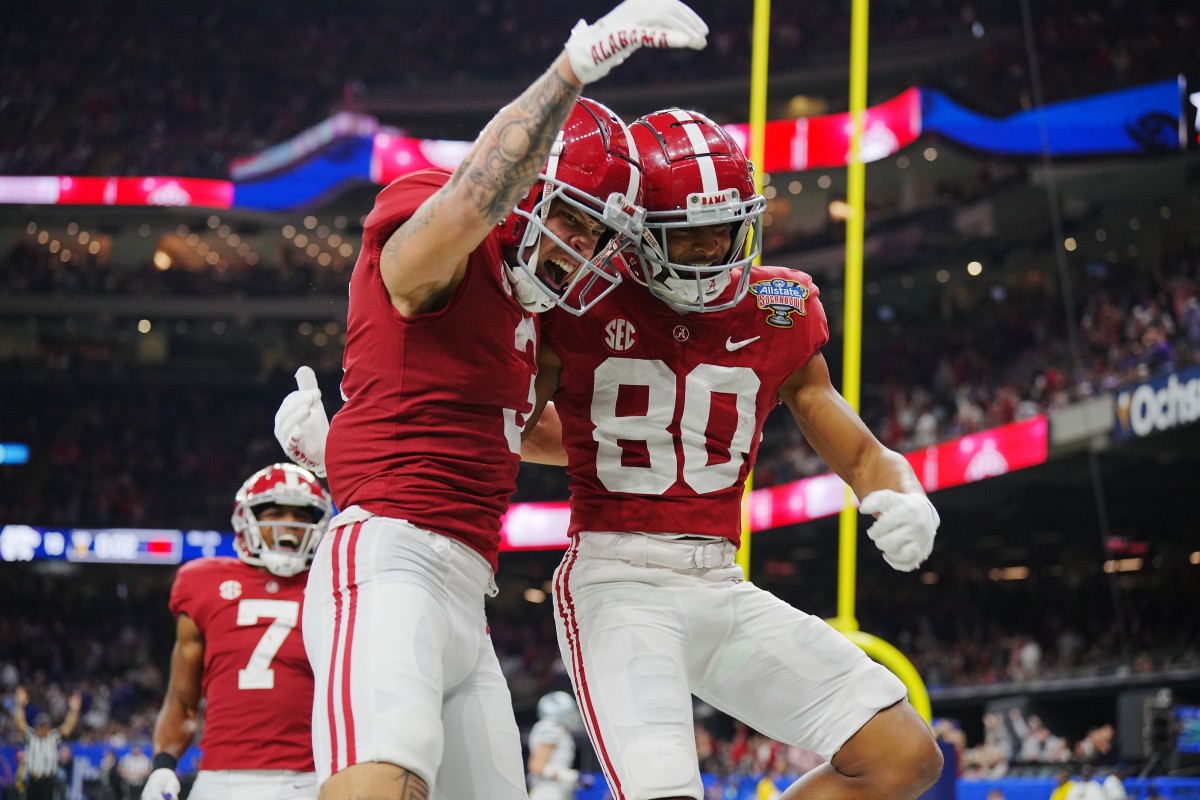
Sun Belt Division
Alabama (1)
Auburn (12)
Mississippi State (35)
Mississippi (37)
Average team rank: 20.8
College sports fans love rivalries as we all know. So, eschewing our new schedule model (more on that later), a special carve-out has been approved by the PANE-FL governing body. Instead of each Sun Belt team playing the other three remaining in their division, Alabama and Auburn will instead play each other six times (as will Mississippi and Mississippi State). If some Iron/Egg Bowl is good, then more is better.
Southeast Division
Georgia (2)
Clemson (6)
Tennessee (27)
South Carolina (36)
Average team rank: 17.8
At last, Clemson gets away from the private schools and the basketball powers and relocates to its natural habitat among fellow football obsessives. Before 2015, this would have been the Almost Division—programs that won a lot of games but not enough of the big ones to satiate their fan bases. Since then, the Bulldogs and Tigers have won two national titles each. There is a motion under consideration to play every division game at Mercedes-Benz Stadium, since all four schools already want to spend every waking minute recruiting in Atlanta.
Sunshine State Division
Florida (11)
Florida State (13)
Miami (19)
UCF (28)
Average team rank: 17.8
Things get hot and humid in this division as the preeminent one-upmanship of the Big 3 in the state gets a new mate as UCF is added to the fray. The Worldwide Leader Conference’s parent company, Disney, has plans to build a future special district in an undisclosed part of the state to be the permanent home for all division games.
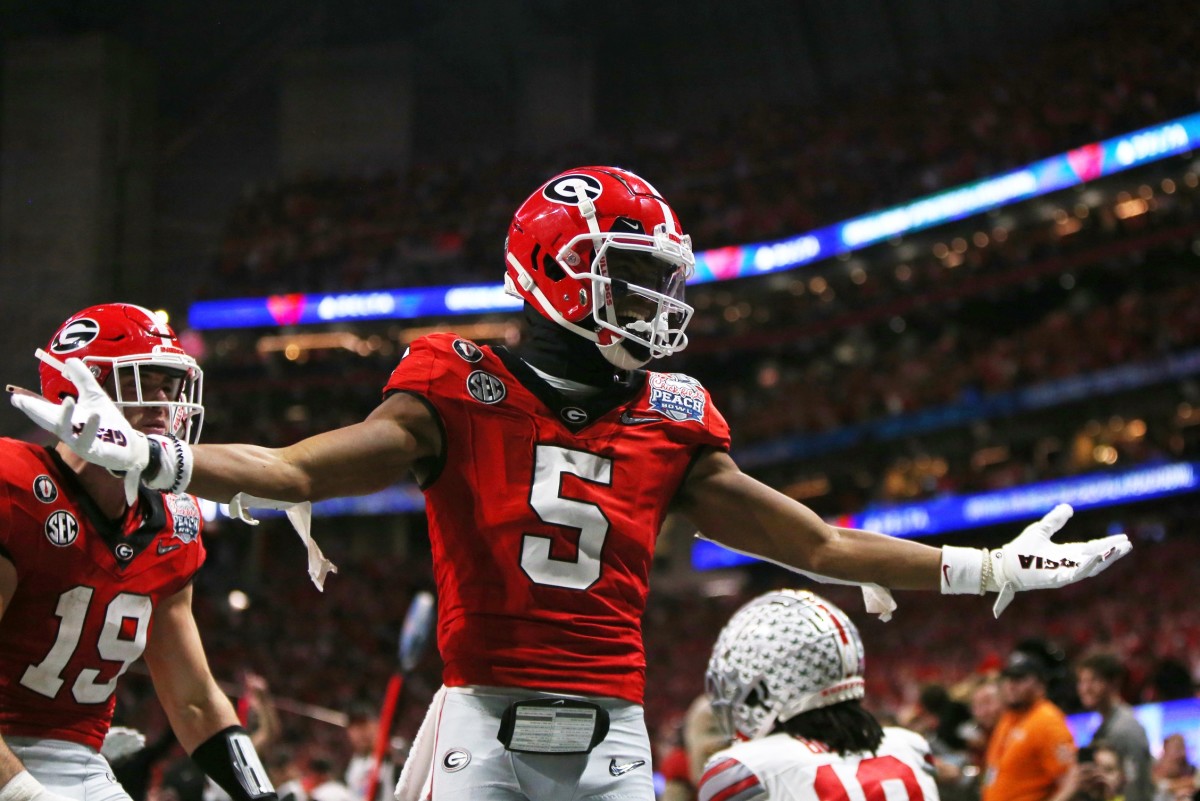
A few notes on the 40-school PANE-FL
- The Big Noon Conference has slightly less power than the Worldwide Leader Conference, but can be considered the realignment winner by network standards—it landed both Notre Dame and North Carolina. Those are the two most lusted-after properties not currently aligned with the Big Ten or SEC (from a TV perspective).
- In terms of national championships won this century, the Big Noon has only two members who have claimed the big prize (USC and Ohio State). The Worldwide Leader has 10 (Oklahoma, Miami, Texas, Florida, LSU, Alabama, Auburn, Florida State, Clemson and Georgia).
- College Football Playoff appearances are more closely aligned, with six schools from the Big Noon (Oregon, Washington, Notre Dame, Ohio State, Michigan and Michigan State) and seven from the Worldwide Leader (TCU, LSU, Oklahoma, Alabama, Georgia, Clemson and Florida State). Playoff records: Big Noon is 4–11, with one title; Worldwide Leader is 23–15, with eight titles.
Playoff format and schedule structure
To get to a 17-game regular season, each team will play:
- Each of the three teams in its division home and away (Iron and Egg division exempt)
- One team from each of the remaining four divisions in its own conference on a rotating basis
- One team from each division in the other conference
- Two other teams from the other conference drawn at random
Playoff qualification: All five division champions plus two at-large wild cards. The No. 1 seed will get a first-round bye. From there, each conference champion will meet at a neutral site to decide a champion. Consider the title game a bowl of grand proportions that some might even call super.
